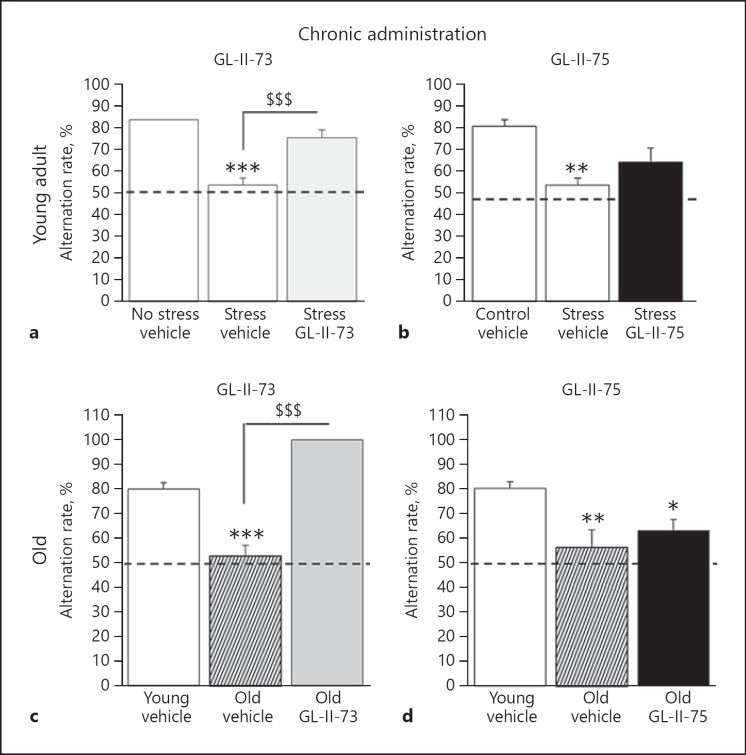Fig. 5.
Pro-cognitive efficacy of subchronically administered GL-II-73 and GL-II-75 on stress-induced and age-related working memory impairment. Effects on working memory of GL-II-73 (a, c) and GL-II-75 (b, d) were assessed in young (a, b) and old (c, d) male mice after subchronic administration in the drinking water for 10 days, using a spontaneous alternation task. Alternation rate was calculated as the percentage of correct alternations in function of the maximum alternation possible (i.e., 6). Prior to experiment, a cognitive deficit was induced by exposing the young animals to chronic stress for 1 week. Young animals received subchronically GL-II-73 (n(0-NS) = 6, n(0-S) = 5, n(30) = 6) or GL-II-75 (n(0-NS) = 5, n(0-S) = 5, n(30) = 6) dosed at 30 mg/kg. Old mice received subchronically GL-II-73 (n(0-Young) = 5, n(0-Old) = 6, n(30) = 4) or GL-II-75 (n(0-Young) = 6, n(0-Old) = 5, n(30) = 5) dosed at 30 mg/kg in the drinking water. Results are presented as mean of the percentage of alternation ± SEM. Effect of the stress: * p < 0.05, ** p < 0.01, and *** p < 0.001 compared to “No stress vehicle.” Effect of the ligand: $$$ p < 0.001 compared to “Stress vehicle” or “Old vehicle.”

